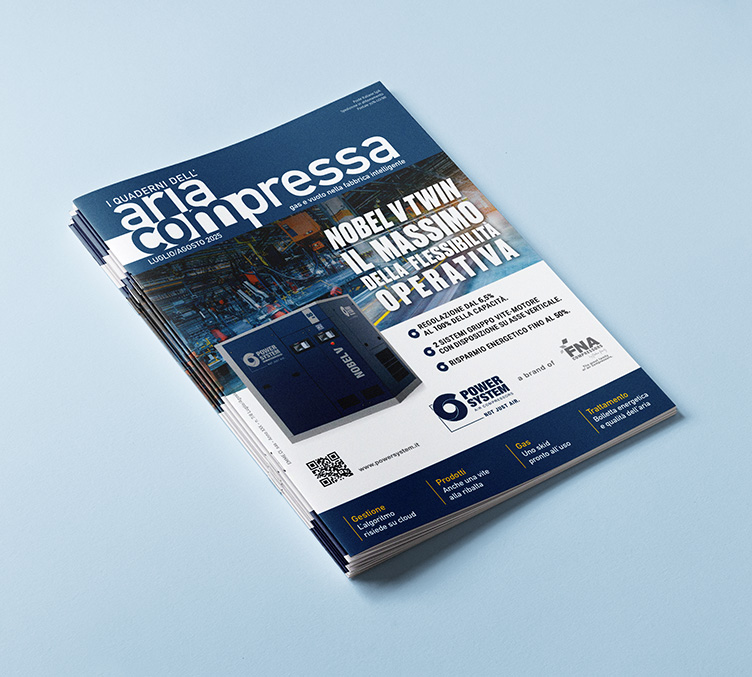


Power System presents NOBEL V, the new range of vertical screw compressors designed to offer maximum performance, compactness and operation flexibility. An engineering project born from field experience and a concrete vision of the sector’s evolution: today more than ever, the industry requires smart, compact, scalable, and highly efficient solutions. NOBEL V is the answer to these needs.
Distributed across three sizes, the range covers a power range from 18.5 to 90 kW, introducing important innovations in terms of mechanical configuration and energy control. What makes it unique in its kind is above all the “TWIN” range from 55 to 90 kW, which houses two independent and synchronized machine systems: an innovative design choice that allows for a level of flexibility and control never reached before in this category.

Below are the key elements that define the value of the NOBEL V range and place it at the top of the market:
Power System NOBEL V is the generation of compressors for the new industrial era. A range ready to make a difference. Thanks to a unique combination of mechanical innovation, advanced motorization and operational flexibility, NOBEL V sets the new benchmark in the screw compressor market.
For distributors, it means being able to count on a unique and reliable product, technologically advanced and suitable for satisfying a wide variety of market demands. For the end user, it means high performance, energy savings, and a system that adapts to their needs.
Read the full article in the July issue of “I Quaderni dell’aria compressa“.